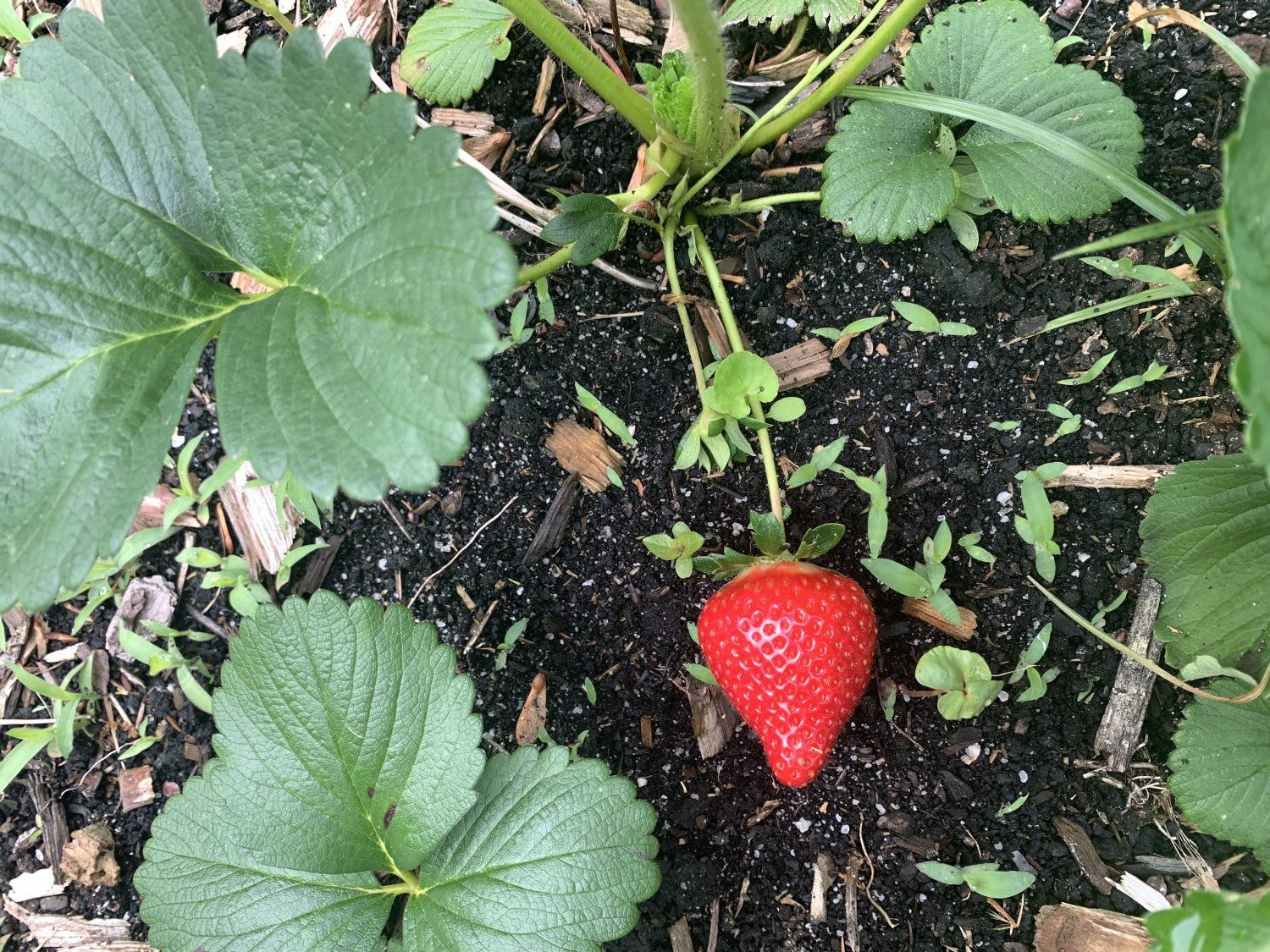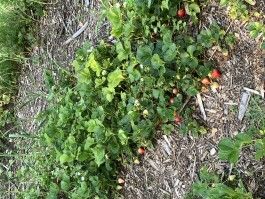If all of my strawberries looked like these plants, I would throw open the gates for u-pick! We're inching towards having enough strawberries for a full picking schedule - and in the meantime, they're giving me gray hairs.
I realized yesterday that there's more to the slow strawberries than the low temperatures we've had this spring - I'm also not growing on plastic. At the old location, the black landscape fabric helped to heat up the soil.
Those plants in the picture are also on their second year. Most farmers treat strawberries as annuals; plant them in November and rip them out in June after they stop fruiting. But they'll live for 3-4 years, and every year they put out 4-8 runners per plant. Our year old plants are large, but these second year plants are much fuller and have about twice the number of flowers and fruits. I've projected we'll get about 6000 lbs of strawberries this spring - just under a pound per plant. I wonder if we can expect double or even triple that next year, when all of our plants are going into their second year of production.
Plus next year our annual vegetables will have moved to their own dedicated space, which will allow us to truly optimize the soil for both the strawberries and the vegetables. Right now we have a hybrid management that doesn't really fit either the strawberries or the vegetables, because each needs a different soil food web. In that vein, I've been talking with a consultant from Advancing Eco Agriculture, and tomorrow I'm taking shipment of some of their products. They have a line of microbial and nutrient foliar sprays, and we're going to be using sap analysis to identify exactly which nutrients are out of balance in our plants. Once we have that info, we can give the plant either the microbe that will help it get the nutrient it needs, or (if we don't know which microbes are needed for that particular nutrient) we can spray a solution with the nutrient onto the plant's leaves for immediate absorption. All of the products are organic, and I'm really excited to see what kind of production we get when we can identify and provide exactly what the plant needs.
All of this adds up to what will hopefully be a LOT of nutrient dense produce coming out of our fields, both this year and in years to come.



